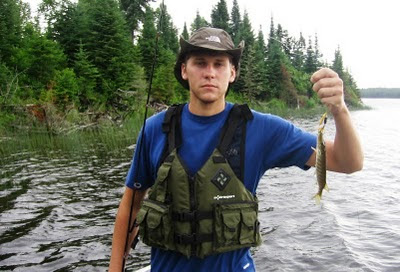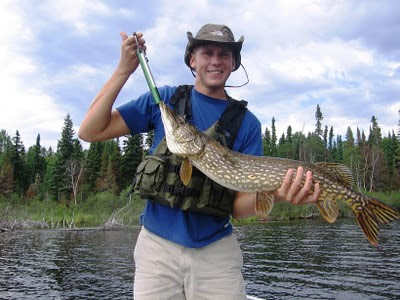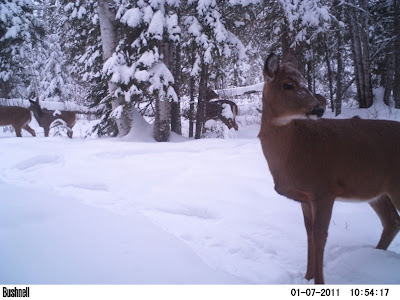
Walleye were so numerous and aggressive on Red Lake, Ontario last summer, and for that matter, for the last several summers, that many times you could catch them virtually anywhere using any technique of fishing.
I caught and released this beautiful, chunky walleye last July while casting for northern pike in the middle of the day. It was one of several that I caught that afternoon, along with about a dozen pike.
I was using a 1/4-oz jig with a 3.5-inch salt-impregnated twister tail. I was also using a clip-on spinner on the jig turning it into a somewhat larger version of a Beetle Spin.
To catch walleye I would cast it parallel to the shore and let it sink to the bottom before retrieving it. For pike I cast it right to the shore or around weed patches. I was also using a six-inch black steel leader, something that would normally scare off walleyes.
Many members of my family caught walleye also while pike fishing that week. Most of them were using spoons like Little Cleos and spinners like Mepps and Blue Fox. No one was using bait.
While we were catching walleyes fairly handily with pike lures in shallow water in protected bays, other anglers were nailing them out in 16 feet on the edges of the deep bays.
The point is the walleye were just everywhere, at all depths, and biting virtually anything. (Of course the real walleye fishermen, using live bait like leeches and worms did far better than us pike fishermen and it is always advisable to use bait if you are targeting walleye.)
Although we normally catch almost nothing but big walleye at our western end of Red Lake, now we catch lots of small ones as well. It would seem there is a walleye population explosion.
You can easily just keep the perfect 14-16-inchers for eating now. In the past you felt guilty about bringing in a 22-incher for lunch but that was the smallest one you had caught all day.
There's still lots of 22-26 inchers out there and even some 28-30 inchers, but in addition now, there are schools of 9-18 inchers as well. In other words, there are more walleye than we have ever seen.
The reason for this bonanza isn't totally known but we have had a number of warm springs and early ice-outs in the last decade and this is known to make for spectacular walleye spawning.
Climate change here has meant ever-earlier ice-outs and perhaps, warmer water temperatures in our lake that has a great variety of water depths including some very deep, cold bays that didn't used to be so good for walleye.
At the same time the lake trout population has drastically declined. We know that is being caused by poor reproductive success and that too could be a result of climate change.
The trout seem to be coming back, however. as we are starting to catch small lakers again. (All trout must be released in Red Lake.)
However, they may have a hard time getting a foothold because, unbelievably, even their deep locations are now populated by walleye! Ministry of Natural Resources biology personnel, searching for little lake trout, have simultaneously found walleye inhabiting depths of water from 60 feet to the surface. They are just everywhere!
And the great variety in sizes means Red Lake is going to have incredible walleye fishing for many years to come!
Click to go back to our website:
Click to see the latest on the blog:
























